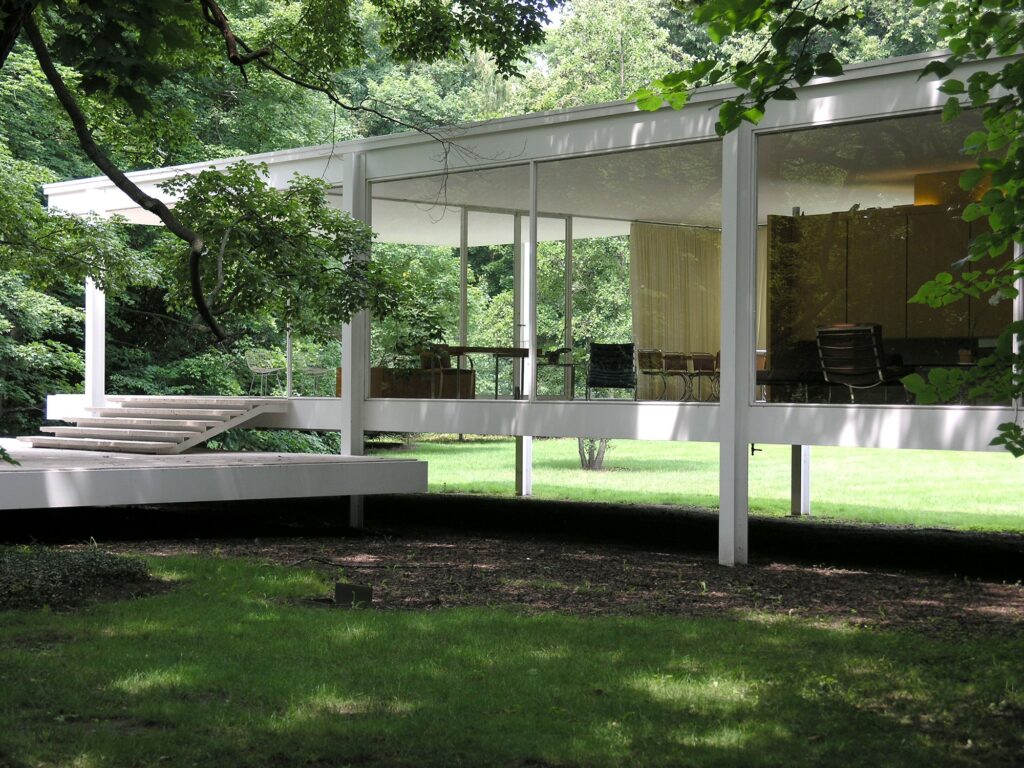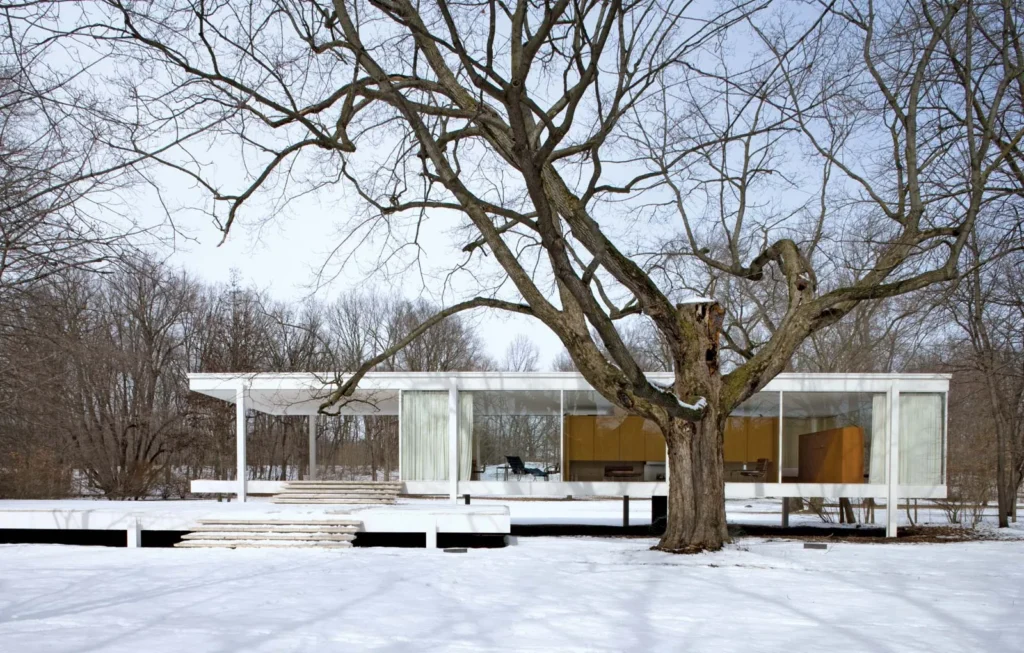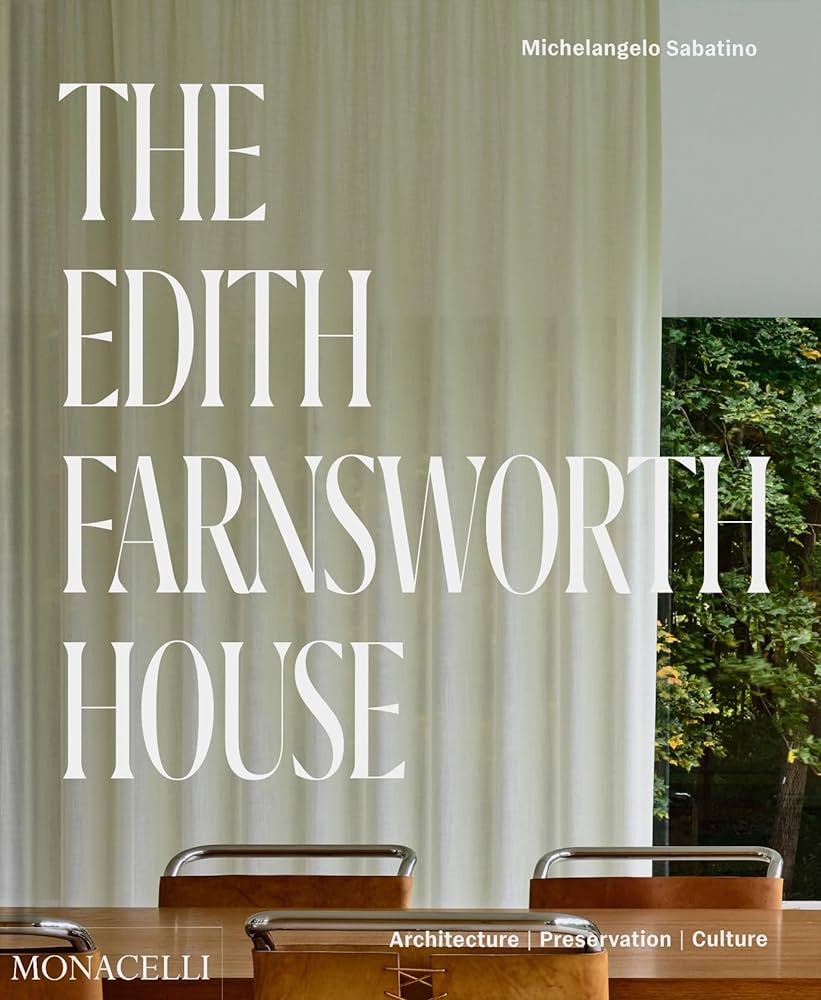
June 11th will mark 20th anniversary of the date the Edith Farnsworth House opened to the public. I remember when I studied about this landmark and controversial weekend house, designed by Mies van der Rohe right after WWII at graduate school. At that time, it was privately owned and seeing it in person was a dream of every design lover. In 2001, after owning it for three decades, it was sold to the Friends of the Farnsworth House, and was opened to the public in 2004 as a house museum. Tickets to the celebration of the 20th anniversary celebration are available online.
Before it was opened to the public, this one-room glass box was famously owed by British art and architecture collector Lord Peter Palumbo and it was called the Farnsworth House. So small (nearly 1,500 sf) and so famous, simply because it was the moment Mies fulfilled his ultimate dream – to build a hosue in glass. It was dream of his entire generation, the radical German architects after the First World War who sought to build glass architecture and to change the world.
It took three decades from the time Mies first envisioned a glass skyscraper, until he had the chance to build a house built entirely of glass. It all started at a dinner party in 1945, the German architect, living in Chicago met the ideal client. She was a single physician, her name was Edith Farnsworth, and we probably would never hear of her if not this house, which placed her in history. She had purchased a wooded riverfront property outside of Chicago at that time, and looked for an architect to build a weekend house for her. She did not envision, of course, that it would be built of glass. Whether the two has a love affair or not, we will never know as it was never confirmed, but they ended up in court over a publicized dispute. She lost the case, sold the house , moved to Italy, and never wanted to see it again.
When Mies first presented it in a retrospective at MoMA in 1947, while it was placed on hold for a while until Dr. Farnsworth could gather the funding, the legend says that Philip Johnson, seeing the model at the exhibition he himself curated, rushed to design his own glass house based on that concept. While one was black and set on the ground, and the other white and placed on columns, the similarity is obvious.
There is so much to talk about the Edith Fansworth house and I am thrilled to be hosting Professor Michelangelo Sabatini in the series ‘Interior Design: Then and Now,’ in revealing the secrets behind this magical house, in celebrating the publication of his book by Monacelli. Registration is here.


